What tourist hotspots should you visit in China? The travellers guide to learning Chinese while touring China.
China's blend of ancient wonders and modern marvels creates an ideal backdrop for both sightseeing and language learning. From the bustling streets of Shanghai to the serene passages of the Great Wall, each location offers unique opportunities to practise Mandarin whilst soaking in the culture. Combining tourist activities with language study enhances your experience, as you'll pick up essential phrases at markets, museums, and local eateries whilst exploring China's most iconic landmarks.
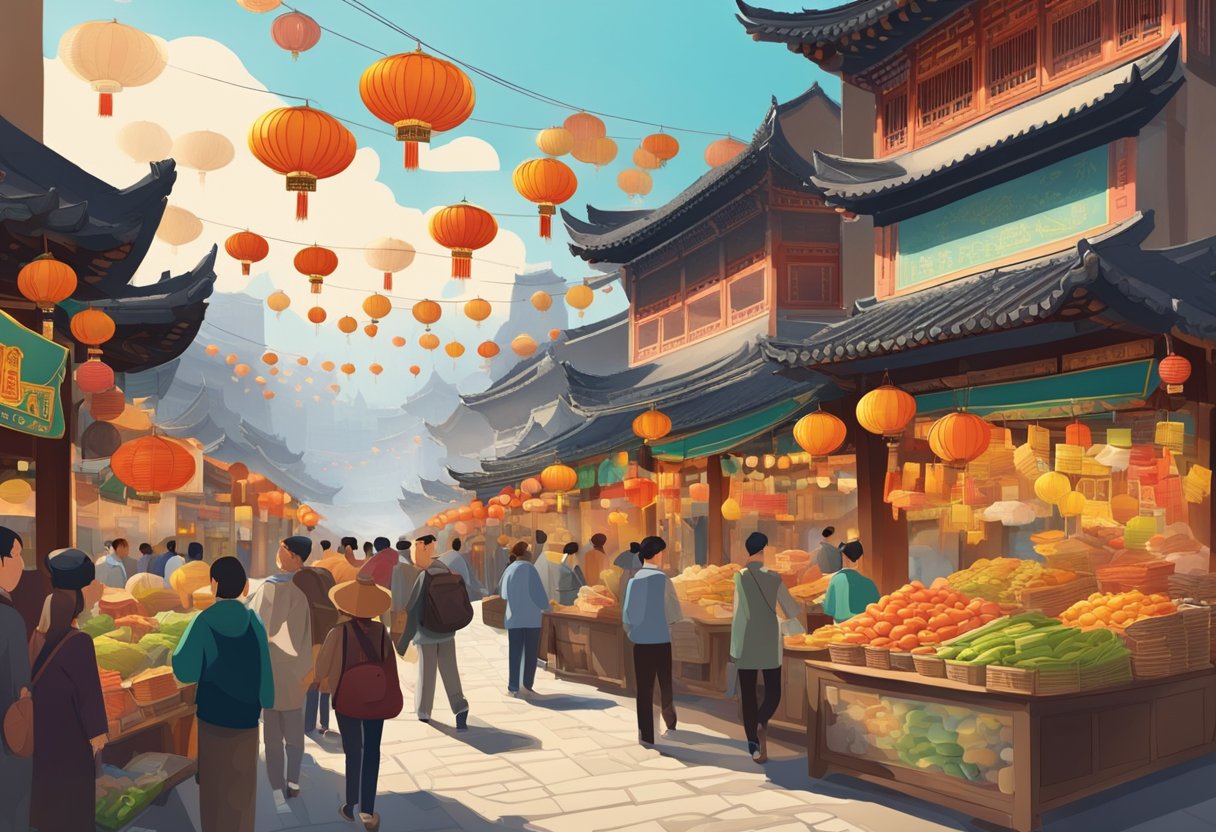
The country's diverse landscapes provide endless possibilities for cultural immersion. The Forbidden City in Beijing showcases imperial architecture, whilst the futuristic skyline of Shanghai's Pudong district demonstrates China's rapid development. Along the way, you'll encounter countless chances to practise your Mandarin with friendly locals who appreciate visitors attempting their language.
Key Takeaways
- Iconic landmarks like the Great Wall and Forbidden City serve as perfect settings for practising basic Mandarin phrases
- Urban centres offer a mix of traditional culture and modern amenities for an enriching travel experience
- Local markets and authentic neighbourhoods provide natural environments for improving your Chinese language skills
Iconic Chinese Landmarks to Explore
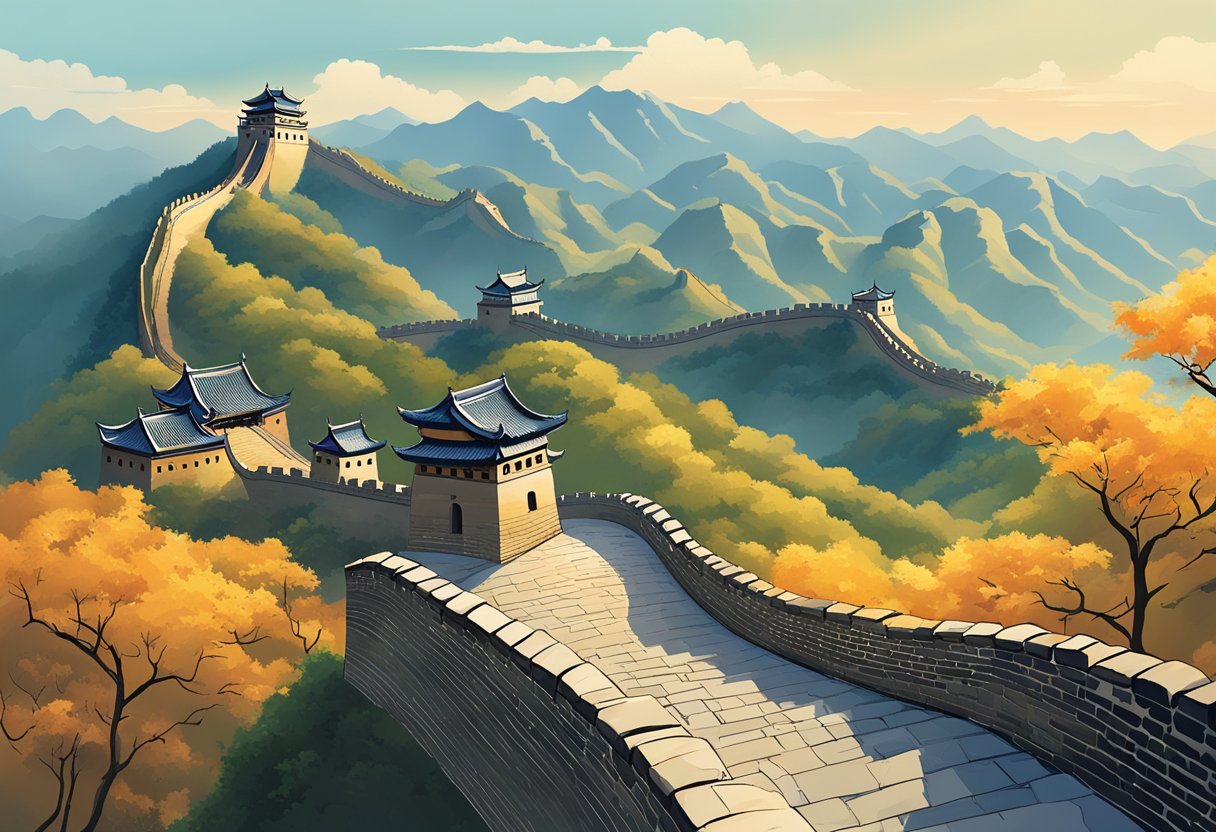
China's architectural marvels span thousands of years, from ancient fortifications to soaring skyscrapers, alongside breathtaking natural formations that draw millions of visitors each year.
Great Wall and Forbidden City: Symbols of Ancient Power
The Great Wall snakes across northern China for thousands of kilometres. You'll find the best-preserved sections near Beijing at Mutianyu, where restored watchtowers offer spectacular views of the wall winding through mountain ranges.
The Forbidden City sits in Beijing's heart, a massive palace complex of 980 buildings. You can spend hours exploring its crimson walls and golden roofs. The former imperial residence now houses the Palace Museum, displaying countless treasures from China's imperial past.
Both structures are UNESCO World Heritage Sites. You'll want to visit early in the morning to avoid crowds. The wall is most photogenic during spring and autumn, while the Forbidden City's courtyards are particularly striking on clear winter days.
Modern Marvels: The Oriental Pearl Tower and Shanghai Tower
Shanghai's skyline dazzles with futuristic architecture. The Oriental Pearl Tower's distinctive pink spheres light up the Pudong district each night, offering rotating restaurant views at 267 metres.
The Shanghai Tower twists dramatically skyward, reaching 632 metres. You can zoom up to the world's highest observation deck in the fastest lift system globally.
Visit The Bund at sunset to photograph these modern marvels across the Huangpu River. The contrast between colonial-era buildings and space-age towers creates stunning photo opportunities.
Natural Wonders: Zhangjiajie National Forest Park and Li River
Zhangjiajie's towering sandstone pillars inspired the floating mountains in Avatar. Take the world's longest cable car ride for aerial views of these unique formations.
The Li River between Guilin and Yangshuo offers China's most painted landscape. Cruise past limestone karsts rising from mist-shrouded waters. Local fishermen still practice traditional cormorant fishing here.
Morning boat trips provide the best views when the river mist creates ethereal scenes. You can hire bikes in Yangshuo to explore the countryside up close.
Integrating Culture with Travel
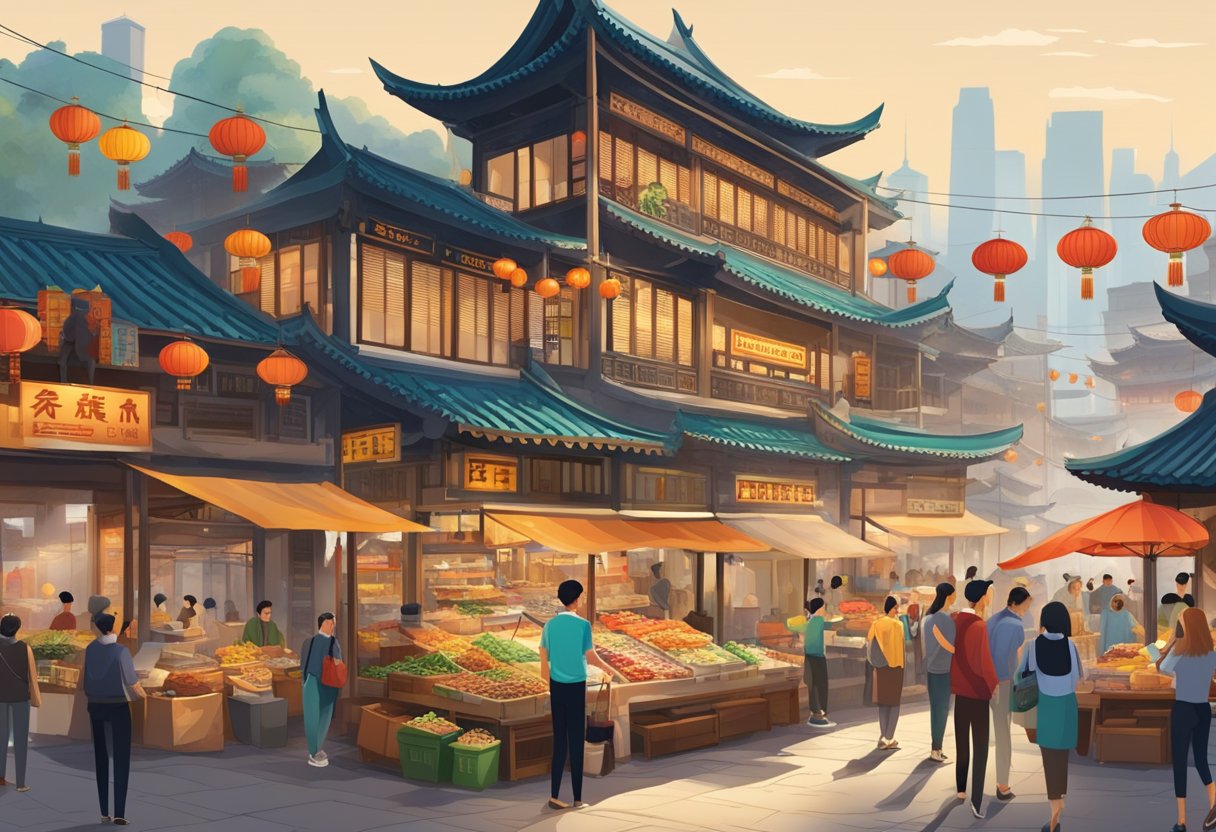
China's cultural hotspots offer perfect opportunities to practise Mandarin whilst exploring centuries of history and tradition. Every destination brings unique chances to learn specific vocabulary and cultural context.
Cultural Hotspots: Temple of Heaven and Summer Palace
The Temple of Heaven stands as Beijing's most iconic prayer site, where you'll hear locals practising tai chi and speaking traditional Beijing dialect. Listen for words like "天坛" (tiāntán) - meaning Temple of Heaven - as you explore the sacred grounds.
The Summer Palace presents a stunning mix of gardens, pavilions and lakes. You'll spot elderly musicians playing traditional instruments, perfect for picking up musical vocabulary. Join the morning crowds for language exchange meetups near Kunming Lake.
Fun language tip: Chat with the vendors selling traditional snacks - they're usually happy to teach you food-related phrases!
Historic Journeys: Silk Road and Xi'an's Ancient Capital
Xi'an's Muslim Quarter buzzes with street food vendors calling out their specialities in both Mandarin and local dialect. It's brilliant for learning food vocabulary while sampling local delicacies.
The ancient Silk Road route through Xi'an connected China with Central Asia. Today, you can visit the Terracotta Warriors while learning historical terms from local guides.
Practice your numbers at the bargaining-heavy markets near the city walls. Merchants often use traditional counting gestures, adding another layer to your language learning.
Contemporary Art and Gastronomy: Former French Concession and Sichuan Cuisine
Shanghai's Former French Concession mixes European architecture with modern art galleries. Pop into M50 art district to learn contemporary art vocabulary from bilingual exhibition descriptions.
Sichuan's spicy cuisine provides perfect opportunities to master food-related Mandarin. Learn phrases like "麻辣" (málà) - numbing and spicy - while exploring Chengdu's markets.
Visit cooking classes in Chengdu where chefs teach both cooking techniques and related Mandarin vocabulary. It's a tasty way to expand your language skills!
Overlooked Gems and Urban Escapes
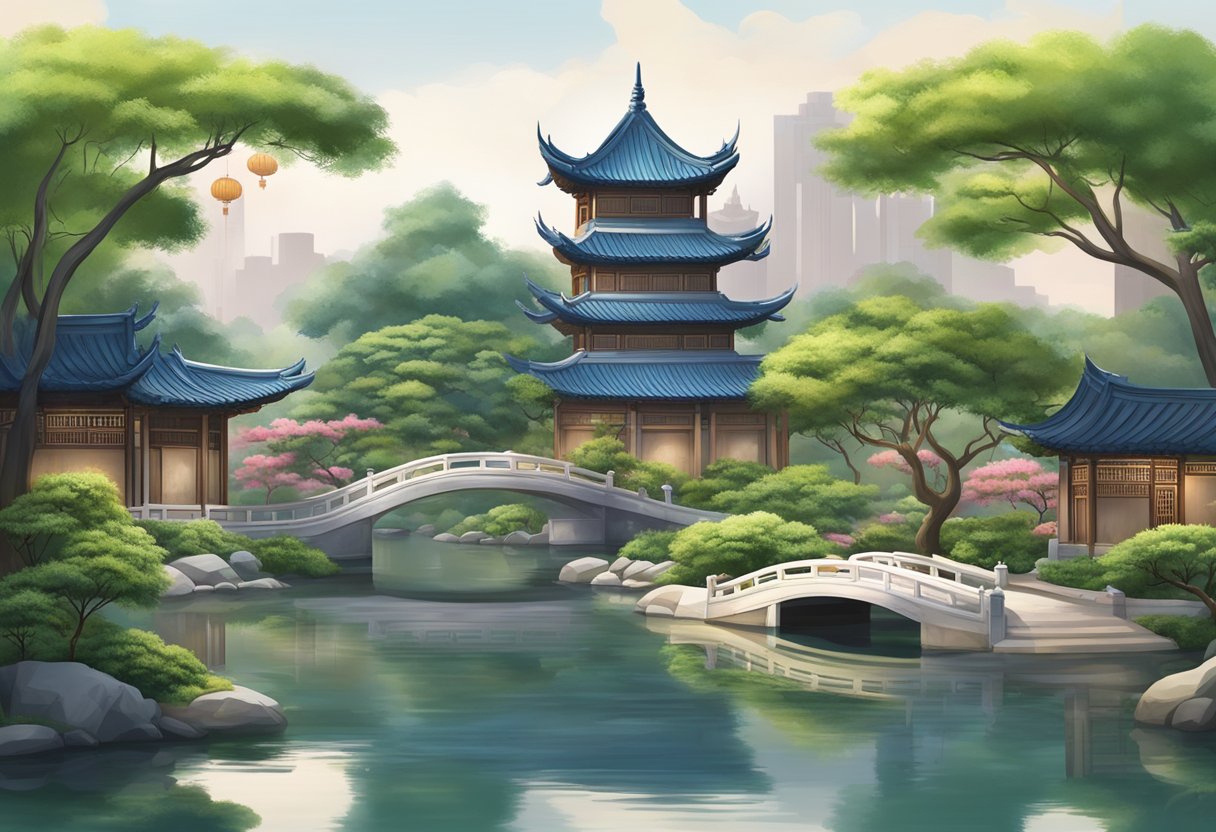
China's lesser-known destinations offer magical experiences away from the tourist crowds, with ancient water towns and ethereal caves waiting to be explored.
Serene Retreats: West Lake in Hangzhou and Reed Flute Cave in Guilin
West Lake in Hangzhou presents a peaceful escape where you can practise your Mandarin with locals whilst sipping Dragon Well tea at lakeside pavilions. The lake's willow-lined paths and traditional gardens create perfect spots for language exchange with friendly residents.
Reed Flute Cave near Guilin showcases nature's artwork through its illuminated limestone formations. You'll pick up geological vocabulary as you chat with guides about the cave's crystal palace chambers and multicoloured rock formations.
The nearby Elephant Trunk Hill provides brilliant photo opportunities and chances to learn geographical terms in Chinese. Local guides often share folk tales about the hill's elephant-like shape, helping you grasp storytelling phrases.
Time Travel in the City: Lijiang's Cobblestone Lanes and Hangzhou's Zhujiajiao Water Town
Lijiang's UNESCO-listed old town lets you step back in time whilst learning traditional Naxi phrases. The maze-like lanes host family-run shops where you can practise bargaining in Mandarin.
Must-visit spots in Lijiang:
- Black Dragon Pool for sunrise tai chi sessions
- Sifang Square for evening dance gatherings
- Ancient tea houses for language exchange meetups
Zhujiajiao Water Town, just outside Shanghai, offers a glimpse into Ming and Qing dynasty life. You'll expand your vocabulary as you explore:
- 1,000-year-old stone bridges
- Traditional Chinese medicine shops
- Ancient post office museums
The town's gondoliers share local expressions as they pole through narrow canals, making language learning feel effortless and natural.
Wildlife Encounters and Conservation Efforts

China's rich biodiversity and commitment to conservation create unique opportunities to connect with rare species and stunning natural landscapes.
Giant Panda Sanctuaries: Chengdu Research Base and More
The Chengdu Research Base of Giant Panda Breeding offers you an up-close look at China's most beloved animal. You'll spot adorable pandas munching on bamboo, playing in their enclosures, and maybe even catch a glimpse of tiny cubs in the nursery.
The best time to visit is during the morning feeding sessions between 8:30 and 10:30 when the pandas are most active. Make sure to book a guided tour - the experts share fascinating insights about panda behaviour and breeding programmes.
You can volunteer for a day as a panda keeper, helping prepare bamboo and clean enclosures. It's proper hands-on conservation work!
Enchanting Landscapes: Moon Hill and Longji Rice Terraces
Moon Hill in Yangshuo will take your breath away with its natural arch formation piercing through limestone peaks. You can trek up 800 steps to reach the arch - trust me, the views are worth every step.
The Longji Rice Terraces, nicknamed 'Dragon's Backbone', transform with each season. In spring, they're filled with water, creating countless mirrors that reflect the sky. Summer brings lush green terraces, while autumn paints them golden.
Hire a local guide to learn about traditional farming methods still used today. The terraces aren't just pretty - they're a brilliant example of sustainable agriculture that's worked for centuries.
Frequently Asked Questions
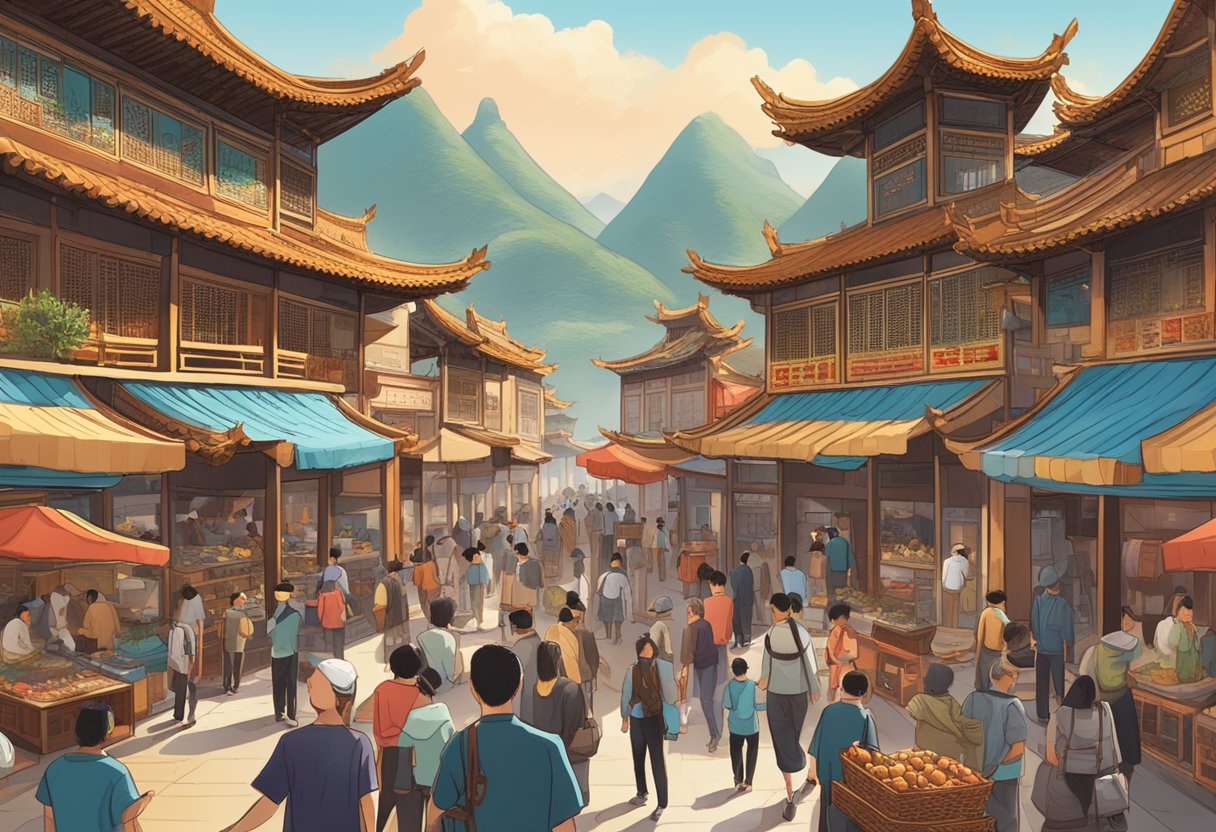
China's tourist destinations offer endless opportunities to immerse yourself in history, culture and language learning while exploring both famous landmarks and lesser-known spots.
What's the unmissable destination for travellers in China?
The Great Wall remains China's most iconic sight. You'll want to visit the Mutianyu section near Beijing - it's less crowded than Badaling but still offers those classic views of the wall snaking across mountain ridges.
The wall stretches over 21,000 kilometres, so pick your section wisely. Spring and autumn bring the most comfortable temperatures for climbing.
How can you pick up some Mandarin while on holiday in China?
Download language apps like HelloChinese before your trip. Practice basic phrases for ordering food, asking directions and greeting locals.
Join a local cooking class - you'll learn food vocabulary while making dumplings or noodles. Many hostels also organise language exchange meetups.
What's the top spot for local tourists within China?
Shanghai's Bund waterfront promenade draws millions of domestic tourists yearly. The mix of historic buildings and futuristic Pudong skyline creates a perfect photo backdrop.
Take an evening stroll to see the neon lights reflecting off the Huangpu River. The area buzzes with street food vendors and performers.
Which region of China offers the most vibrant cultural experience?
Inner Mongolia's grasslands provide an authentic glimpse into nomadic culture. Stay in a traditional yurt, try horseback riding and sample local dairy delicacies.
The region's festivals showcase Mongolian music, wrestling and archery competitions.
What are the must-see hidden gems across China?
Zhujiajiao Water Town near Shanghai offers a peaceful escape from city life. This 1,700-year-old village features stone bridges, narrow lanes and traditional architecture.
Take a gondola ride through the canals and try local specialities like sticky rice dumplings.
Where's the coolest place to hang out for history buffs visiting China?
The Terracotta Army in Xi'an stands as one of archaeology's greatest discoveries. Over 8,000 unique warrior statues guard Emperor Qin's tomb.
Visit early morning to avoid crowds. The on-site museum explains the fascinating restoration process.